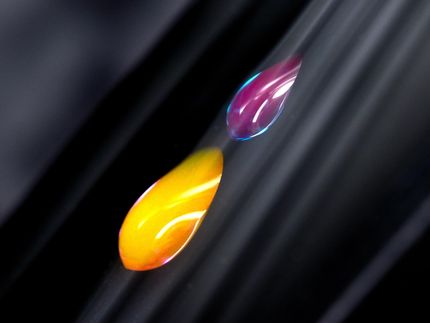A study describes liquid water diffusion at molecular level
An article published in Physical Review and conducted by researchers at the universities of Granada and Barcelona might lead to a revolutionary change in water desalination and filtration methods.
Researchers at the universities of Granada and Barcelona have described for the first time the diffusion of liquid water through nanochannels in molecular terms; nanochannels are extremely tiny channels with a diameter of 1-100 nanometers that scientists use to study the behavior of molecules (nm. a unit of length in the metric system equal to one billionth of a meter that is used in the field of nanotechnology).
This study might have an important impact on water desalinization and filtration methods. Two articles published in Science state that the introduction of graphene membranes and carbon nanolayers will revolutionize water desalinization and filtration processes, as water diffuses rapidly through these materials when their pores are 1nm in diameter.
Liquid water exhibits a range of unusual properties that other chemical compounds do not have: up to 65 abnormalities. Some of these abnormalities have been known for 300 years, as the fact that water expands below 4ºC.
Many of the abnormalities found in water have a dynamic nature -e.g. water molecules move faster as density increases-, as a result of the properties of the hydrogen bond networks that form between water molecules; hydrogen bonds lead to the formation of tetrahedral structures wherein a central atom is located at the center with four molecules located at the corners. However, this geometrical structure changes with pressure and temperature and, until now, changes in the molecular structure and properties of liquid water had not been described.
A Mystery to Solve
Particularly confusing are the results on the diffusion of water confined between two hydrophobic plates. Neither experiments nor computer-based models have clarified whether confinement increases or reduces the mobility of water molecules. However, it seems that the mobility of water molecules relies on ducts having a diameter above or below 1nm.
In a study published in Physical Review, professors Francisco de los Santos Fernández (University of Granada) and Giancarlo Franzese (University of Barcelona) described the behavior of water confined between two hydrophobic plates. In their study, Franzese and Fernandez used models to demonstrate that the diffusion of nanoconfined water is unusually fast, as a result of the competition between the formation and breaking of hydrogen bonds, and the free volume available for cooperative molecule rearrangement.
In nanochannels above 1 nm in diameter, macroscopic diffusion of water only occurs if there is a cooperative rearrangement of molecules, which leads to HB breaking within a cooperative region of 1nm in size. On the other hand, diffusion increases in nanochannels below 1 nm, as fewer HBs need to be broken. Thus, this study proves that the interplay between hydrogen bond breaking and cooperative rearranging within regions of 1-nm determine the macroscopic properties of water.
Original publication
Most read news
Other news from the department science

Get the chemical industry in your inbox
By submitting this form you agree that LUMITOS AG will send you the newsletter(s) selected above by email. Your data will not be passed on to third parties. Your data will be stored and processed in accordance with our data protection regulations. LUMITOS may contact you by email for the purpose of advertising or market and opinion surveys. You can revoke your consent at any time without giving reasons to LUMITOS AG, Ernst-Augustin-Str. 2, 12489 Berlin, Germany or by e-mail at revoke@lumitos.com with effect for the future. In addition, each email contains a link to unsubscribe from the corresponding newsletter.





















































